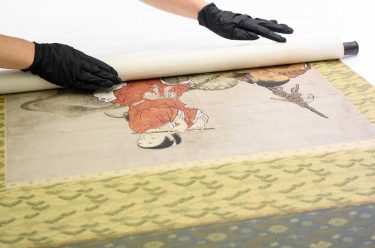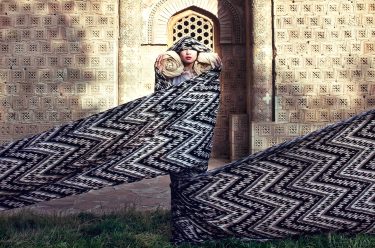Thirty-eight Asian scrolls and twenty-one folding screens were recently assessed in a comprehensive survey to prioritise their rehousing in preparation to display the painted scrolls Courtesan and Maid (illustrated) and Vairocana bonji. Hanging Scroll: Courtesan and Maid (illustrated) in the current exhibition ‘I Can Spin Skies‘. The condition of the scrolls varied, with some scrolls being extremely creased, buckled and cracked, while others were in good condition. The scroll collection was previously housed in a variety of packaging, including custom archival boxes, bubble wrap, and tissue paper wrapping with some scrolls unrolled and housed in the flat position due to their fragile condition.
East Asian paintings such as scrolls and screens are ‘laminate structures made from heterogeneous materials’.1 Pigments are adhered with animal glue to a flexible substrate of silk or paper, with silk often surrounding the central painted area. Layers of paper and wheat starch adhesive combine to create the supporting structure.2 The combination of organic and absorbent materials from which a scroll painting is constructed makes them highly susceptible to mould, pests, and airborne contaminants. Western conditions such as high temperatures and dry conditions will lead to embrittlement and stiffness, while high humidity can cause cockling, and moisture retention leading to mould growth and staining.3 Tears are often present near the upper and lower rods.4 Traditionally, scrolls are housed on a wooden futomaki roller (illustrated Fig.1), a cylindrical insert which expands the size of the roll for better storage.5
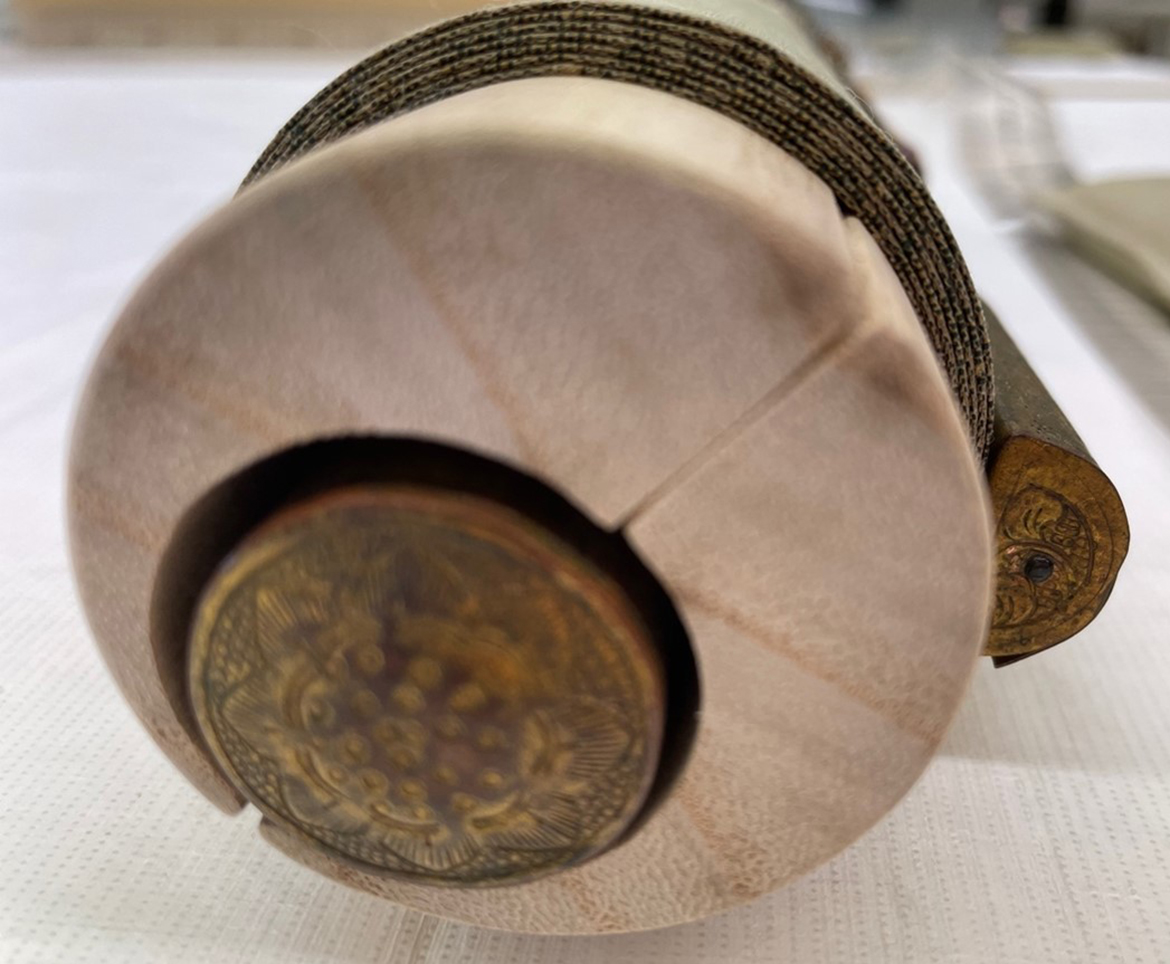
Construction of a new housing method for the scrolls and screens involved seeking advice from conservators in other galleries, research and sourcing of materials, and consultation with QAGOMA colleagues. Initially, preservation rollers were constructed from Mylar (illustrated (Fig.2)) and archival cardboard tube (illustrated Fig.3) however these methods did not provide adequate protection for the scrolls.
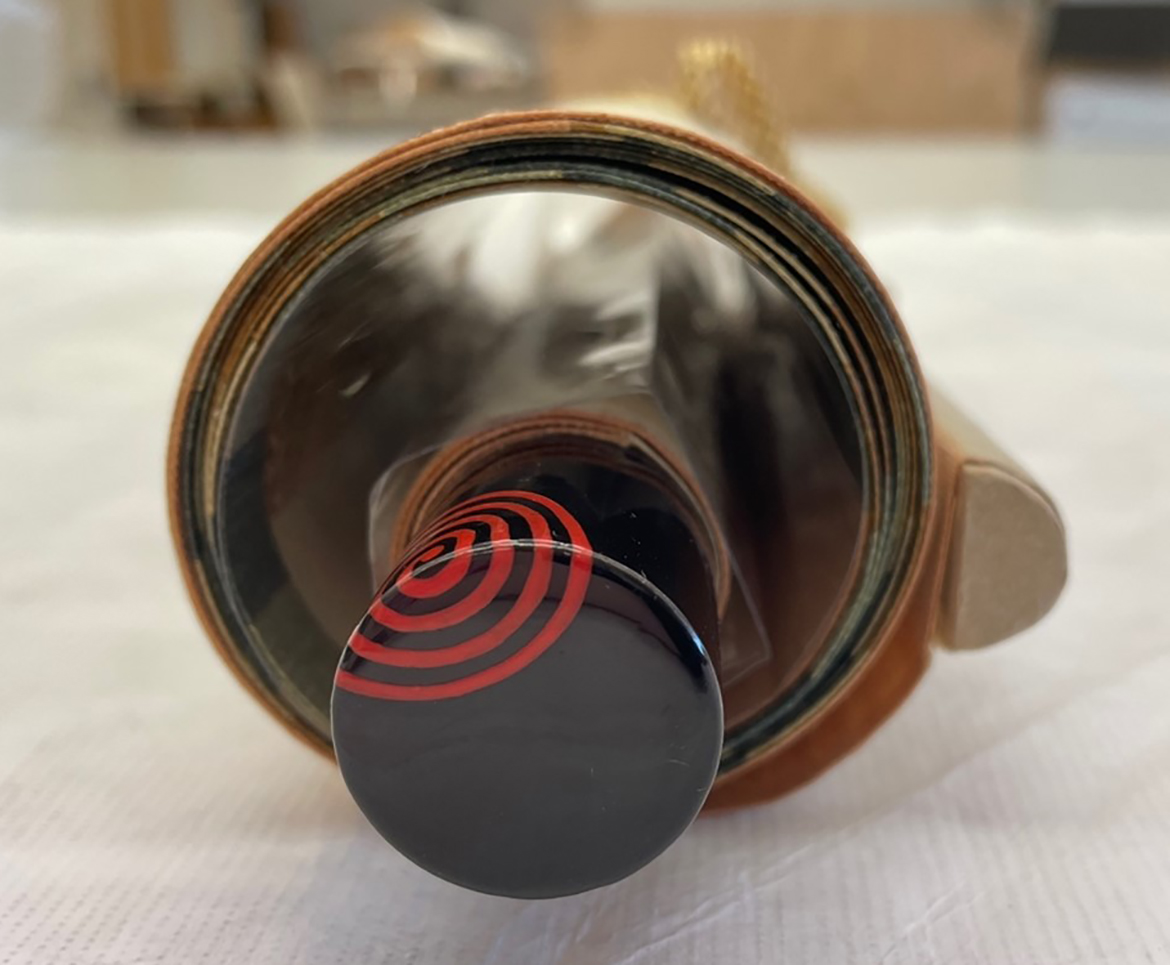

The method chosen to improve storage of the painted scrolls was the Ethafoam preservation roller (illustrated Fig.4). Ethafoam is an inert polyethylene microfoam which is used across museums and galleries for its archival properties 6. Rehousing the scroll paintings on Ethafoam preservation rollers will greatly improve the condition and longevity of the Gallery’s painted scroll collection. The expanded diameter of the roller, and the cushioning effect of the Ethafoam combine to provide an improved housing option for the scrolls and will reduce the undulations and cracking caused by the rolling and unrolling process. Hanging Scroll: Courtesan and Maid (illustrated) was the first scroll to be rehoused using the Ethafoam preservation roller (illustrated Fig.5). Following the completion of the scroll rehousing project, some of the folding screen collection will be rehoused.
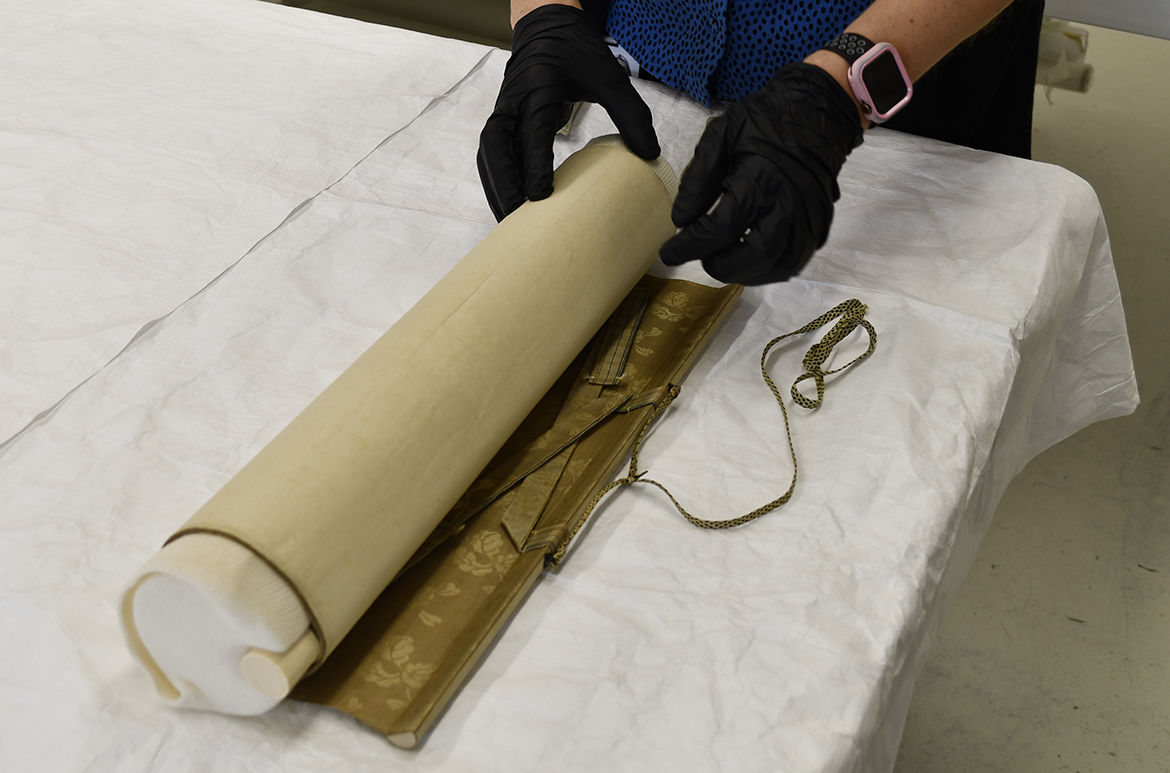
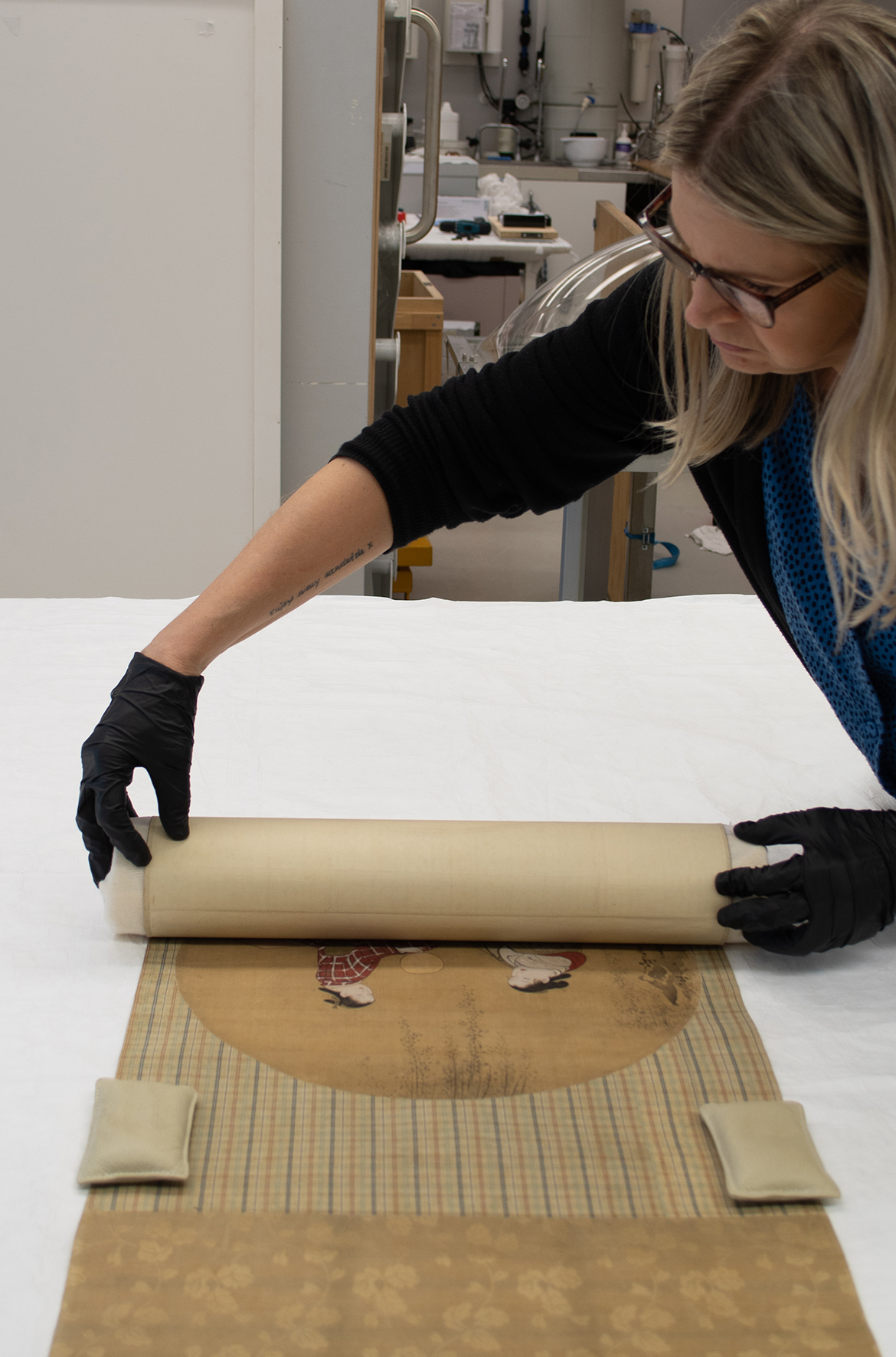
The exhibition ‘I Can Spin Skies‘ at the Queensland Art Gallery until 23 June 2024 features two painted scrolls Courtesan and maid and Vairocana bonji. Hanging Scroll: Courtesan and maid (illustrated) produced in the 18th century is a good example of a scroll requiring an alternative storage method due to undulations and cracking caused by incorrect storage, and the rolling and unrolling process. In contrast, Vairocana bonji (Sanskrit character) (illustrated), a painted scroll from the early 18th Century, is in excellent condition, partly due to its housing on an original wooden futomaki roller.
Hanging scroll: Courtesan and maid
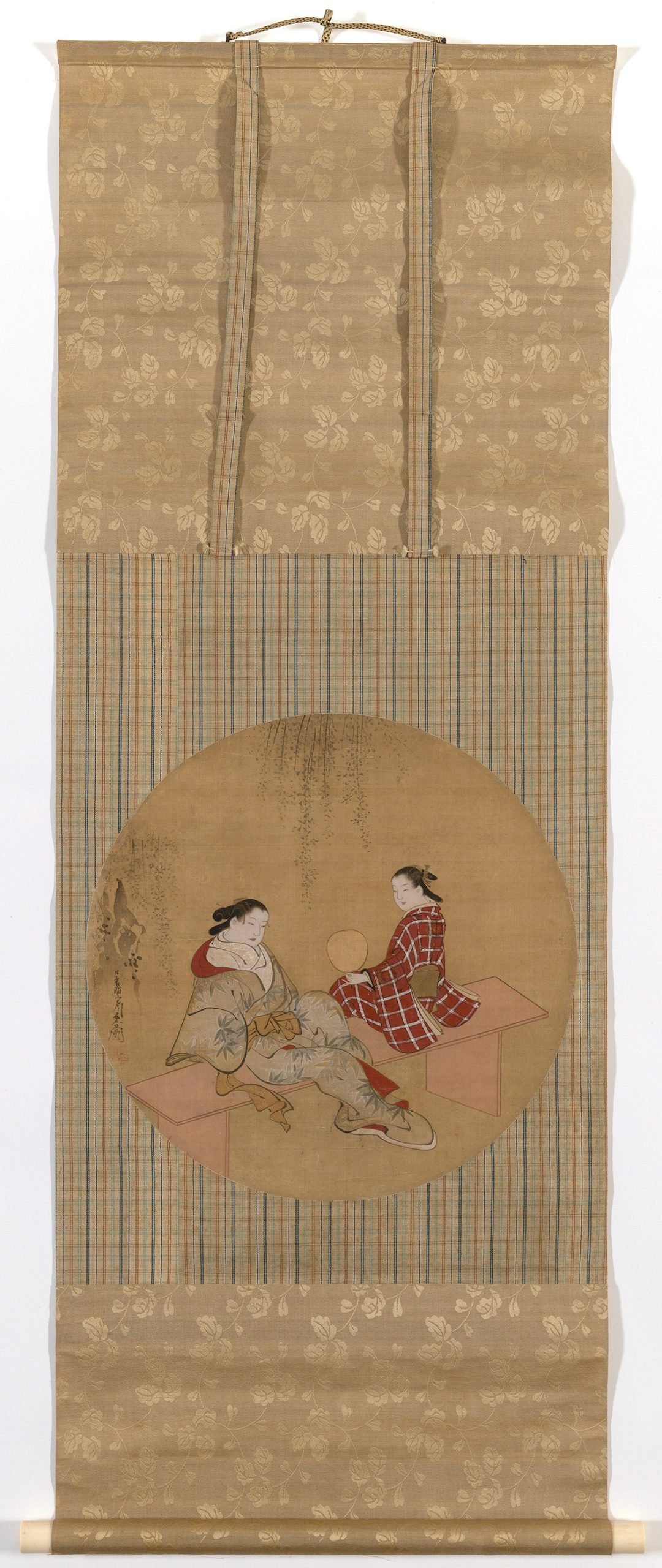
Vairocana bonji (Sanskrit character)

Marina Horvath is an emerging paper conservator finalising her masters of Cultural Materials Conservation with the University of Melbourne
Endnotes
1-3 Hare, A 2006, ‘Guidelines for the care of East Asian Paintings: Display, storage and handling’, The Paper Conservator, vol. 30, no.1, pp 73-92.
4 Nishio, Y 2001, ‘Maintenance of Asian Paintings II: Minor treatment of scroll paintings’, The Book and Paper Group Annual, vol. 20, pp.15-26.
5 Wakeling, E 2019, ‘Conserving Japanese Scrolls’, blog post, 3 August, Queensland Art Gallery and Gallery of Modern Art, viewed 1 June 2023, < https://blog.qagoma.qld.gov.au/a-fleeting-bloom-conserving-japanese-scrolls/>.
6 Cool Conservation Online 2023, Ethafoam and other Polyetyhlene Foams in Conservation, Cool Conservation Online, viewed 20 May 2023, <https://cool.culturalheritage.org/byauth/williams/foam.html>.
Asian scrolls are on display in ‘I can spin skies‘ in the Queensland Art Gallery’s Henry and Amanda Bartlett Galleries (5&6) from 5 August 2023 until 23 June 2024.
ARTISTS & ARTWORKS: Explore the QAGOMA Collection
#QAGOMA

